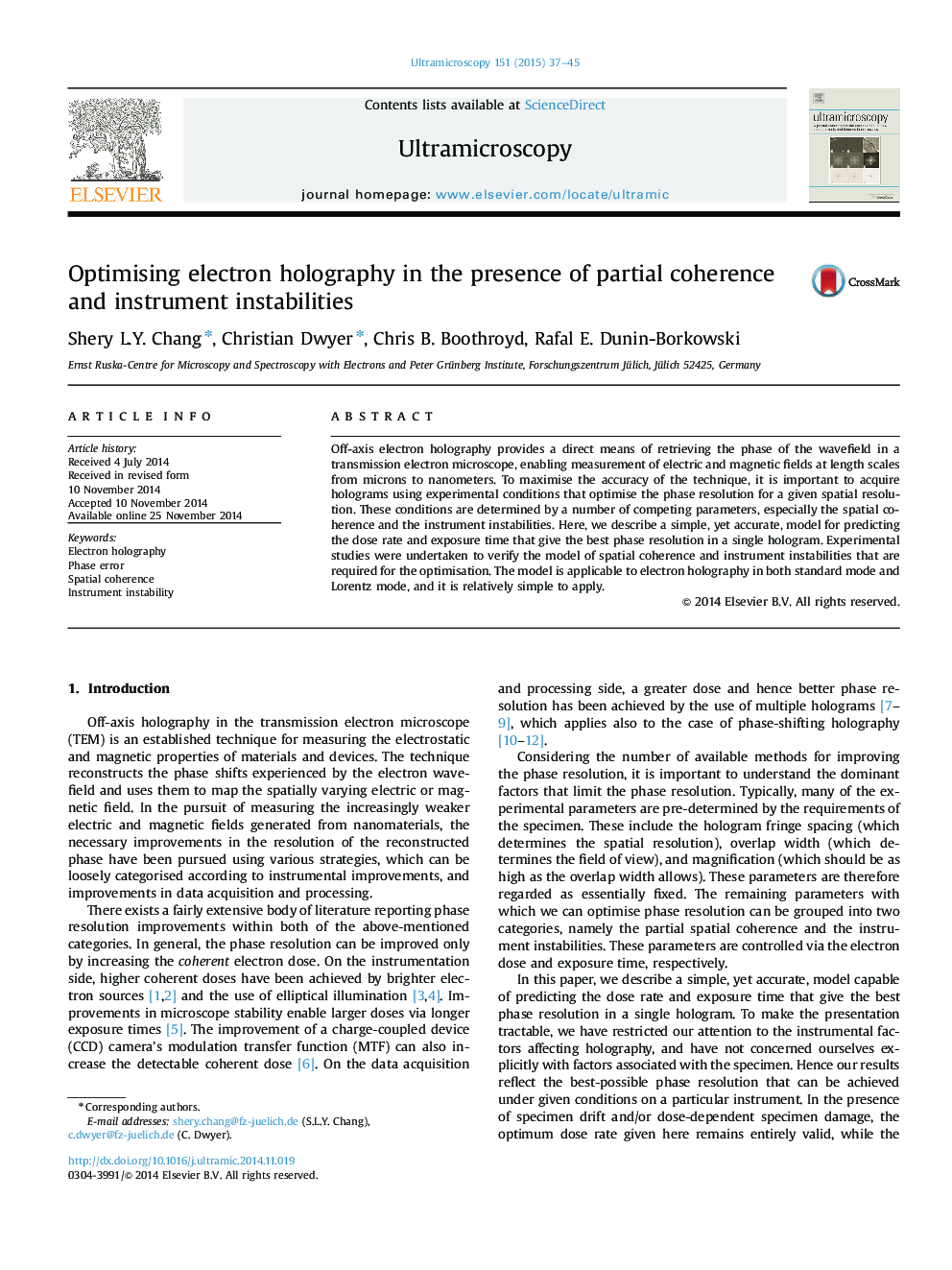| Article ID | Journal | Published Year | Pages | File Type |
|---|---|---|---|---|
| 8038133 | Ultramicroscopy | 2015 | 9 Pages |
Abstract
Off-axis electron holography provides a direct means of retrieving the phase of the wavefield in a transmission electron microscope, enabling measurement of electric and magnetic fields at length scales from microns to nanometers. To maximise the accuracy of the technique, it is important to acquire holograms using experimental conditions that optimise the phase resolution for a given spatial resolution. These conditions are determined by a number of competing parameters, especially the spatial coherence and the instrument instabilities. Here, we describe a simple, yet accurate, model for predicting the dose rate and exposure time that give the best phase resolution in a single hologram. Experimental studies were undertaken to verify the model of spatial coherence and instrument instabilities that are required for the optimisation. The model is applicable to electron holography in both standard mode and Lorentz mode, and it is relatively simple to apply.
Related Topics
Physical Sciences and Engineering
Materials Science
Nanotechnology
Authors
Shery L.Y. Chang, Christian Dwyer, Chris B. Boothroyd, Rafal E. Dunin-Borkowski,
